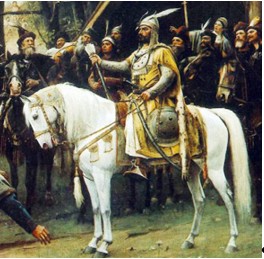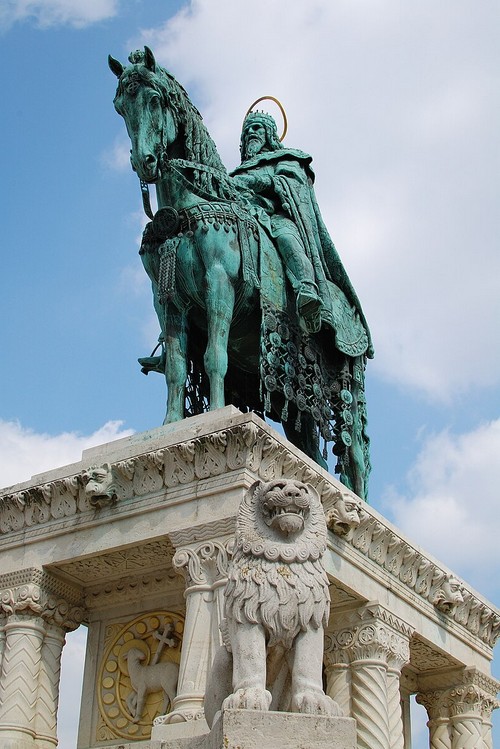
Origins of the Hungarians (Magyars)
Hungarians—also known as Magyars—are an ethnic group primarily located in Hungary, with significant communities in neighbouring countries. They speak Hungarian, a Finno-Ugric language, and claim ancestral descent from the Magyars who migrated westward from the southern Ural region or western Siberia.
However, recent genetic research has begun to challenge earlier theories of a purely Finno-Ugric origin. Instead, it reveals a highly complex ancestral background, indicating that the Magyars merged with pre-existing populations in the Carpathian Basin rather than displacing them. Genetic evidence highlights substantial contributions from groups such as the Huns, Avars, Sarmatians (ancient Iranian-speaking peoples), and even the Xiongnu from Mongolia.
Ancestral Influences and Migration to Carpathian Basin
- Finno-Ugric Roots: The earliest Magyars likely spoke a Finno-Ugric language and originated in the southern Ural or western Siberia region.
- Genetic Complexity: The founding population displays minimal Finno-Ugric genetic influence. Instead, it shows substantial admixture with:
- Huns and Avars (both traced to present-day Mongolia, linked to the Xiongnu)
- Mansis, early Sarmatians, and European/Caucasian populations
- Huns and Avars (both traced to present-day Mongolia, linked to the Xiongnu)
- Waves of Migration:
- Late Iron Age (c. 300 BC – 1st century AD): Celtic tribes
- Early Antiquity (1st–4th centuries AD): Sarmatians and Germanic tribes
- Late Antiquity (4th–5th centuries AD): Invading Huns
- 6th century AD: Avars settled after defeat by Charlemagne
- 7th century AD: Slavic tribes arrived
- End of 9th century: Arrival of the Magyars, marking a major turning point
These layers of migration enriched the cultural and genetic heritage of the Carpathian Basin. Each group left a permanent imprint on the land and its people.
The Magyar Confederation
The first-generation Magyar gene pool emerged from Central Asia/South Siberia. As the Magyars migrated westward, they absorbed new groups, including populations of European and Caucasian origin.
- The Magyar tribal alliance was initially called the hét Magyar (“Seven Magyars”).
- Before 881 AD, three Turkic rebel tribes joined this alliance, forming the Onogurs, or “Ten Arrows.”
- The name Magyar likely derives from Megyer, the most prominent tribe in the confederation.
- The Latin-derived term Hungarian (Ungri/Ungari) appeared from the 1830s onwards.
Settlement and Society in the Carpathian Basin
By the time the Magyars entered the Carpathian Basin in 895 AD, they encountered remnants of prior civilisations, including Slavs and Avars, many of whom were gradually assimilated.
- Although the Avars, who had arrived in 670, were defeated by the Franks (791–795), their settlements remained and were later complemented—not replaced—by the Magyars.
- The Magyar ruling elite spoke Turkic, although Hungarian itself is not a Turkic language. Instead, it bears linguistic resemblance to languages once spoken northeast of the Bashkirs.
- Hungarian society was structured into tribal-national organisations. It was ruled by:
- Lords, chiefs, and clan heads
- “Braves” who served as escorts
- Commoners who owed allegiance and labour to the nobles
- The typical Magyar warrior was a Europid male around 170 cm tall, often with a shaved head and braided hair—a visual testament to the steppe warrior culture.
The Árpád Dynasty and Christianisation
The Magyar conquest was led by Prince Árpád, who completed the occupation in 895. His legacy continued through:
- Zoltán (c. 950) – Árpád’s son
- Taksony (from 955) – who pursued an isolationist policy
- Géza (972–997) – baptised in 972, expanded control west of the Danube and Garam, and introduced Christianity to Hungarian society
- Stephen I (born Vajk) – a devout Christian who defeated his pagan relative Koppány and was crowned Hungary’s first Christian king in the year 1000
- Died in 1038
- Canonised as a saint in 1083

St Stephen statue Budapest
The Golden Bull of 1222
A landmark moment in Hungarian constitutional history came with the issuance of the Golden Bull in 1222. This charter:
- Enshrined the rights of Hungarian nobles
- Allowed disobedience to the King if he acted unlawfully
- Is often compared to England’s Magna Carta (1215)
Together, these documents marked the earliest forms of constitutional monarchy in Hungary and England, safeguarding noble privileges and limiting royal authority.
